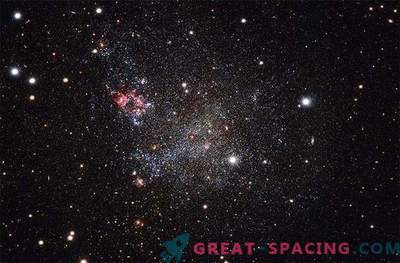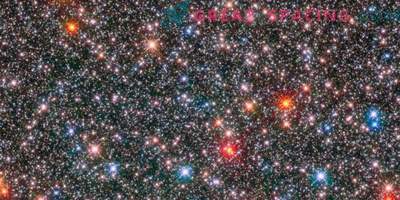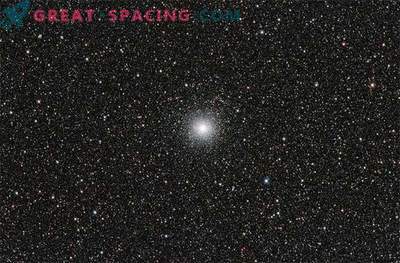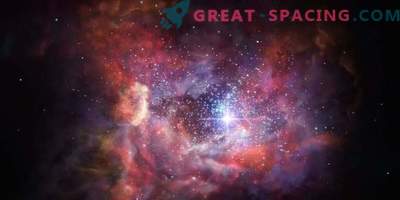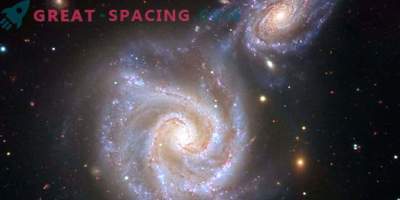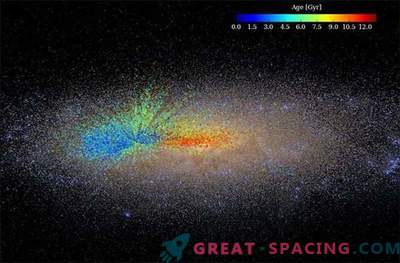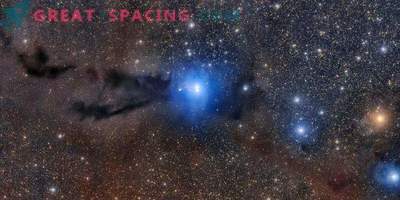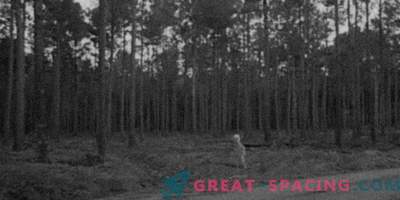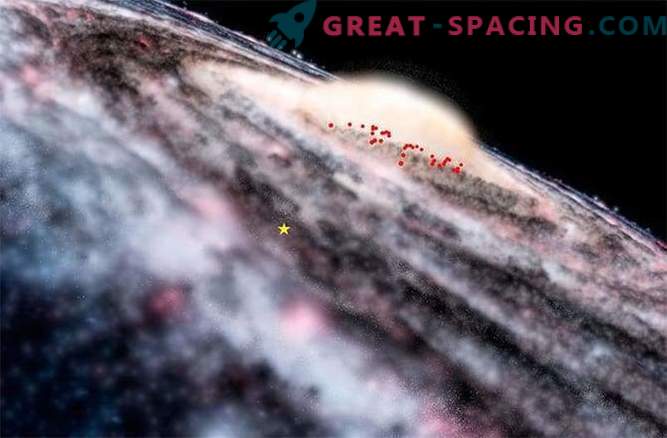
Astronomers discovered a previously unknown component of the Milky Way using the VISTA telescope from the European Southern Observatory. His location was able to be determined, thanks to the bright stars in the classification called Cepheids, a disk of young stars located inside a thick cloud of dust in the central part of the bulge.
A group of young stars was found not far from the center of the galaxy in the Milky Way, earlier in this region stars of more mature age dominated. American astronomers believe that stars form a disk (previously unknown to scientists) that passes through the outer part of a dusty, peanut-shaped bulge in the center of the galaxy.
In the center of the galaxy, in the dust of the Milky Way is a dense forest of stars, in which even the bright flashes of some of them are not always visible to astronomers. But scientists are inventing new methods of detection to remove the veil from this mysterious area. New observations obtained with the telescope "VISTA", allowed to determine a previously unknown group of young stars.
The whole group of young stars could not be seen directly, their presence was determined by identifying especially bright and unusual stars called Cepheids. They are tied to a specific cosmic diameter, and interacting with each other, create certain vibrations that increase their brightness over several days or months. Stars like Cepheids are variable, they change over time. Regular variations in size and temperature occur on them, each star has its own reasons for this. During this period, the pulsation of their luminescence passes from a peak of brightness to a maximum darkening and in the reverse order.
The period of pulsations passes with a certain regularity; in 1908, astronomer Henrietta Swan Leavitt determined what determines the length of the pulsation periods of Cepheid. Using this knowledge, scientists were able to find out the actual luminosity of these stars, and later they began to use this information to measure cosmic distances, which makes these stars an invaluable space tool.
Daniel Majaess, from St. Mary’s University in Nova Scotia, Canada, said in her correspondence, “I can’t even imagine what astonishment of Henrietta Leavitt would be if she learned about the significance of Cepheid and what important role they played in our understanding of the secrets of the cosmos, which are undoubtedly related to its discovery - the dependence of the period-luminosity of Cepheids. Now this knowledge helps to determine the extragalactic distance scale and the rate of expansion of the Universe, now we are taking a fresh look at the nature of the mysterious region spanning the center of the galaxy. ”
In their study, a group of scientists reports about the emergence of new candidates for Cepheids. Their number is 655 objects in the Milky Way galaxy. Data from the VISTA telescope from the European Southern Observatory in Chile for the period from 2010 to 2014 show that Cepheids glow brighter several thousand times than most non-variable stars, such as the Sun. “This makes it easier to find these stars,” says Istvan Dekani of the Catholic Pontifical University in Chile. “This discovery is a wonderful demonstration of the latest technical advances in infrared astronomy. “VISTA” has an extensive field of view and excellent infrared visualization of distant objects, which allows us to penetrate a huge amount of interstellar dust that blocks the view inside the Milky Way, the telescope helps, reveals a number of invisible zones in optical light, ”he adds. In order to find new Cepheids, “VISTA” studied a certain part of the sky for a long time, this allowed scientists to detect the brightness of Cepheid oscillations. Among the 655 new stars, the so-called classic Cepheids, only 35 are less than 100 million years old. Compared to Sun, whose age is 4, 57 billion years, they seem to be minors.
“Classic Cepheids are very rare, one in a million objects,” says Decani. Stars are usually born in large groups, and the presence of young classical Cepheids shows that there are other nearby stars nearby. Scientists claim that they have found a new, thin disk of young stars, which crosses the galactic bulge. “Scientists have previously thought that galactic bulges are home to old stars, and the appearance of a population of new young stars in this place is not surprising,” says Decani.
“It is not surprising that we found young objects in this region. Thanks to the new calculation models, we assumed their location there and first observed these objects with our own eyes. What is really surprising is the presence of the ubiquitous classic Cepheids in this area. The disc of young stars spreads smoothly in the core of the Milky Way, ”- says Dekani.
“The next step will be to determine the orbits of these stars in order to better understand their origin and future fate. It is necessary to clarify the number of objects in accordance with the observations. In this sense, our discovery is a key piece of the puzzle, ”he adds.
